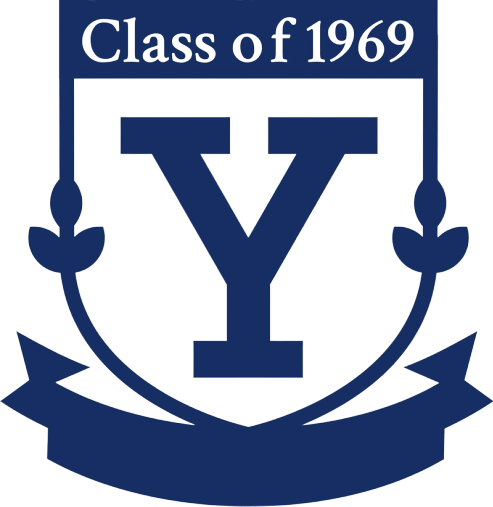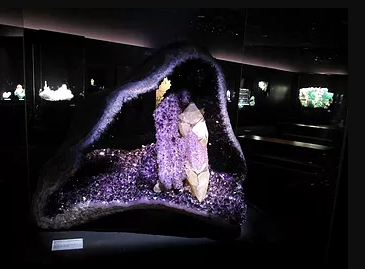David Friend Hall Opens
News from/about Calhoun’s David Friend (and also chronicled in Class Notes from May 2017): From an interview in New Haven Magazine:
David Friend is a man on a mission: he wants to bring natural history museums into the 21st century to inspire the next generation. The lifelong mineral collector and Yale alumnus donated $4 million for David Friend Hall, which opened last fall at the Yale Peabody Museum of Natural History in New Haven, Conn. It’s a new type of gem and mineral gallery where big, beautiful “rock stars” in high-end custom cases with high-end custom lighting make visitors say, “Wow!”
Friend, who lives in Boston, spoke exclusively to New Haven in his first interview about the new gallery on the museum’s third floor and his passion for rock collecting.
“I gave this gift because I believe in the power of museums to instill a desire to learn and to change the trajectory of your life. How it accomplishes this is through mind-boggling, jaw-dropping exhibitions like the great dinosaurs at Yale or the staggeringly beautiful crystals and minerals on display in my new hall,” David Friend says.
Named for David Friend, the new exhibit hall sends a message to other collectors.
“When I go around the mineral shows, I want people to think, ‘Yeah, he’s the guy who gave that mineral gallery to the Yale Museum. Everybody’s talking about it. Maybe I should do something like that with our museum.’ If I made the gift anonymously, it would have very little impact on others who could make similar gifts,” Friend explains. “They know me, and they know there’s a real person behind it who really cares about the importance of museums.”
Friend started collecting minerals at age 8 when construction crews were blasting through rocks to build Interstate 95 in New York. On his way home from school, he’d pass through the construction site where he’d pick up quartz, mica crystals and the occasional beryl. At age 9 or 10, he visited the American Museum of Natural History in New York City for the first time. After seeing the mineral exhibits, he was hooked on collecting.
“I knew instantly that this was for me. I had recently started collecting rocks around New Rochelle, where I grew up, and seeing the real stuff at the American Museum of Natural History set me up for a lifetime of collecting and sparked an interest in chemistry,” he says.
Friend studied engineering and music at Yale, graduating with a bachelor of science degree in 1969. He went on to co-found six high-tech companies, including the data storage firm, Carbonite, and his current company, Wasabi.
During his Yale years, he had no time nor money for collecting, but later resumed his hobby. In his Boston home, he currently has about 200 museum-quality mineral specimens, which he spotlights with delicate lighting using LED chips and wire as thin as a human hair. His mineral specimens range in size from a billiard ball–sized specimen of fluorescent willemite to a 300-pound specimen of pyrite (fool’s gold). There are minerals of every shape — from spiky metallic stibnite to sculpted sandstone. The mixture of textures and colors is unique for each specimen.
“How can nature make such things?” he says. “It’s a window into how the universe was created.”
In his younger days, Friend visited mines in Australia, South Africa and the western part of the United States to find minerals for his collection. But now, he’s more excited about buying specimens than digging them out of the earth.
“I am slightly claustrophobic, so crawling into some wet dark tunnel to lie on my back for hours to chip out some crystal is not for me,” he says. “Buying, to me, is more interesting. Every year miners around the world make new exciting discoveries. When I go to the big shows in Tucson or Munich, you never know what amazing new things you’re going to see. It’s like a treasure hunt. I could dig for my whole life and never find anything of that quality.”
Accompanied by one of his daughters, Zoe, a sculptor and mineral collector, Friend checks out the latest discoveries at the annual mineral shows in Tucson, Arizona, and Munich, Germany.
At the Tucson Gem, Mineral and Fossil Showcase, he bought a geode from a miner who had driven from Uruguay with the 460-pound specimen in a U-Haul truck. The geode was too large to display in his Boston home, so Friend sent the piece to Yale, where its amethyst crystals sparkle under the spotlight in David Friend Hall. It’s currently on loan to Yale for two years, but may stay there longer, because there’s no space in Friend’s home for this eye-catching piece.
Friend credits Zoe with finding his most unusual pieces – the sandstone concretions. Spotting a few examples at the Tucson show, she was intrigued by their form, which resembles crescent roll dough spilling out of a can. Friend ended up buying several concretions, including a massive 800-pound specimen, which is currently on loan to Yale at David Friend Hall. The concretions came from the bottom of a quarry in Fontainebleau, France, where they were covered by white, pure silica sand that is used in glassmaking.
“Richard Berger, the guy who bought the sandstone concretions when they were discovered roughly 30 years ago, has them locked away in a warehouse in Seattle. Very few people have seen them,” he says.
But Friend has no plans to pack up all the Fontainebleau concretions in his own collection and ship them to Yale for display. His biggest, most impressive specimen, already there, is enough. The mission of David Friend Hall is to display a variety of spectacular mineral specimens – some permanent and some rotating every two years or so – just the way masterworks of art are showcased.
“Museums like Yale’s museum have what I call the ‘Upstairs’ and the ‘Downstairs’,” he says. “Research goes on in the Downstairs. The mission of the Upstairs, the public part, is to be the face of the university to the community and to inspire the next generation, who will walk in and suddenly get excited — about mineralogy, geology, ornithology or whatever — by showing them something jaw-dropping and amazing. Yale is the first academic museum to do this.”
Video Tour (5gb file)
Gallery:

Quartz crystal from Namibia (left); Quartz variety amethyst with calcite from Uruguay (right) in David Friend Hall. The quartz crystal from Namibia was purchased for David Friend Hall; the quartz variety amethyst with calcite is on loan from the collection of David Friend.

Amethyst geode from Uruguay in David Friend Hall, on loan from the collection of David Friend.

Amethyst geode from Uruguay in David Friend Hall, on loan from the collection of David Friend. Look through the amethyst specimen to see the limestone panel embedded with fossils of fish and a palm frond on the gallery wall.

Sandstone concretion from Fontainebleau, France, in David Friend Hall. On loan from the collection of David Friend.

Sandstone concretion from Fontainebleau, France, in David Friend Hall. On loan from the collection of David Friend.
[/av_textblock]
[/av_one_third]

